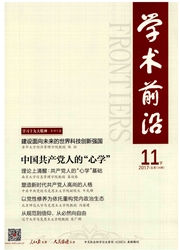

 中文摘要:
中文摘要:
改革开放以来,特别是进入21世纪以来,是否应迂都成为一个影响较为广泛的争议性问题。继续定都北京对国家长治久安具有不可或缺的重大地缘战略意义,缓解北京“城市病”应该选择“展都”而非“迁都”。因此,调整疏解非首都核心功能成为北京城市和区域发展的重要理论和实践问题,规划建设国家行政新城是坚持和加强北京首都核心功能,调整疏解非首都核心功能、实现京津冀协同发展的必然选择。本文在这一认识的基础上,初步探讨了国家行政新城的功能定位、规模大小和地址选择,提出了可规划迁入国家行政新城的中央政府机构及国家举办事业单位的范围、国家行政新城规模100万人左右为宜,以及保定和秦皇岛北载河两个选址方案。
 英文摘要:
英文摘要:
Since the reform and opening up, especially after the entry into the 21st century, whether the Chinese capital should be relocated has become a widely controversial issue. Maintaining Beijing's capital role is of great geo-strategic significance for the long-term national stability. To alleviate Beijing's "urban disease", the better solution is to expand it rather than move the capital. Thus, relocating functions non-essential to Beijing's role as the capital away from the city is an important theoretical and practical issue concerning Beijing's urban and regional development. The planning and construction of the national administrative town is an inevitable choice in terms of adhering to and strengthening the core functions essential to Beijing's capital role, relocating the non-essential ones, and realizing the coordinated development of Beijing, Tianjin and Hebei Province. On the basis of this understanding, this article studied the functions, size and address of the national administrative new town, determined the scope of the central government departments and national public institutions which can be moved to the new town, suggested that its population should be kept below 1 million people, and discussed the two possible locations including Baoding and Beidaihe.
 同期刊论文项目
同期刊论文项目
 同项目期刊论文
同项目期刊论文
 期刊信息
期刊信息
